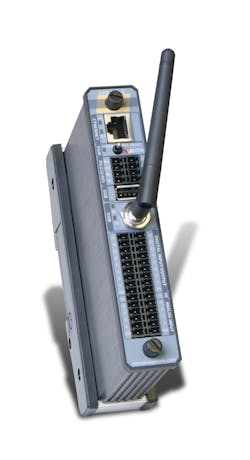The Internet and Web 2.0 technologies are breathing new life into remote terminal units (RTUs), helping them compete with programmable logic controllers (PLCs) to enable SCADA systems for water/wastewater, oil and gas, and building automation applications where the HMI could be any smart phone, tablet or PC.
One example is CSE-Semaphore’s new RTU product, which combines cyber security protection, wireless communications and SCADA functionality in a single package. The new TBox LT2 RTU is single, rugged module that includes a web server, 3G wireless communications and a cyber security application suite all tightly integrated with programmable automation, alarm notification, data logging, and Ethernet communications.
“Our unique, web page editor unlocks the potential of web-enabled automation and monitoring, and enables easy creation of innovative push and multi-platform communications strategies,” says Kevin Finnan, vice president of marketing for CSE-Semaphore. “Instead of producing device-specific apps, WebForm Studio 2.0 uses Asynchronous JavaScript and XML (AJAX), the agnostic technology of reference for Web 2.0.”
Without writing code, TBox LT2 users can build such device-independent Web pages that include vectorized dynamic objects, available from a library within WebForm Studio 2.0. The Web pages are compatible with all browsers (Chrome, Firefox, IE9, Opera, Safari), all operating systems (Android, iOS, Linux, Windows) and, therefore, virtually all smart phones and tablets.
The integrated cyber security suite includes authentication, encryption, a firewall, HTTP Secure, SFTP, SSH, TLS/SSL, and a virtual private network. For reporting within IT networks, TBox LT2 also provides a broad implementation of the simple network management protocol (SMNP).
“A key point about our security suite is that we have included measures that do share similarities to those in the computer/network/IT world—in spite of the fact our product isn’t a PC. Otherwise, SCADA systems need to be treated as uncommon entities, which require extra security measures with few similarities to those for industrial computers and networks,” says Finnan.
Finnan says the TBox LT2 system provides everything needed to create high-performance yet economical automation and monitoring of installations. “The decentralized architecture on which CSE Semaphore's TBox RTU line is built provides up to 50 percent cost savings over other systems that seek to combine PLC, communications and SCADA components,” he adds.
CSE-Semaphorehas released a white paper describing how enhancements to SCADA systems and RTU products create an intelligent infrastructure that eases deployment of smart systems.
About the Author
Renee Bassett
Managing Editor

Leaders relevant to this article:
